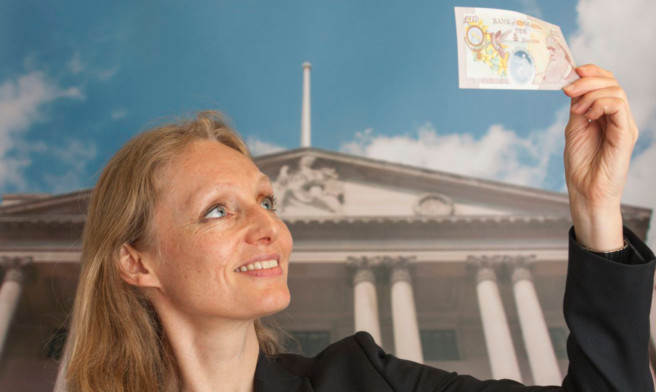Plastic bank notes could start being issued within three years under plans being drawn up by the Bank of England.
It says polymer notes are cleaner, more secure and because they last longer £10 million a year cheaper than the cotton paper currently used.
The proposals could see new-style £5 and £10 notes starting to replace paper currency for the first time in the bank’s 300-year history.
If produced, they would also be smaller, in line with other countries, with the £10 reducing in size to become slightly larger than euro notes.
A consultation on the change will include events at shopping centres across the UK to allow members of the public to feel polymer bank notes and give their comments on whether they are in favour.
Concerns about the notes being slippery and possibly sticking together, and that they would not fold as easily as paper, have already been raised by focus groups which the bank has been holding since last summer.
Retailers, banks and the cash industry have also been asked for their input.
Meanwhile, a study by the Royal National Institute for the Blind found a 50/50 split on preference for paper or polymer, with most saying they could get used to the plastic.
Under the proposals, only the new-style £5 note featuring Winston Churchill and £10 note depicting Jane Austen will initially be printed on the synthetic material.
The Churchill note is due to be issued in 2016 and the Austen note a year later.
New bank governor Mark Carney introduced plastic notes two years ago in Canada while in charge of its central bank. He said earlier this year before starting his job that Threadneedle Street officials were exploring options for currency.
The widespread consultation over the next two months will see around 50 events held around the country including 13 in major shopping centres as well as discussion events with regional chambers of commerce and retailers.
A final decision will be announced in December.
Charlie Bean, deputy governor of the Bank, said: “Polymer bank notes are cleaner, more secure and more durable than paper notes. However, the Bank of England would print notes on polymer only if we were persuaded that the public would continue to have confidence in, and be comfortable with, our notes.”
Polymer bank notes are made from a transparent plastic film, coated with an ink layer which enables them to carry printed design features.
